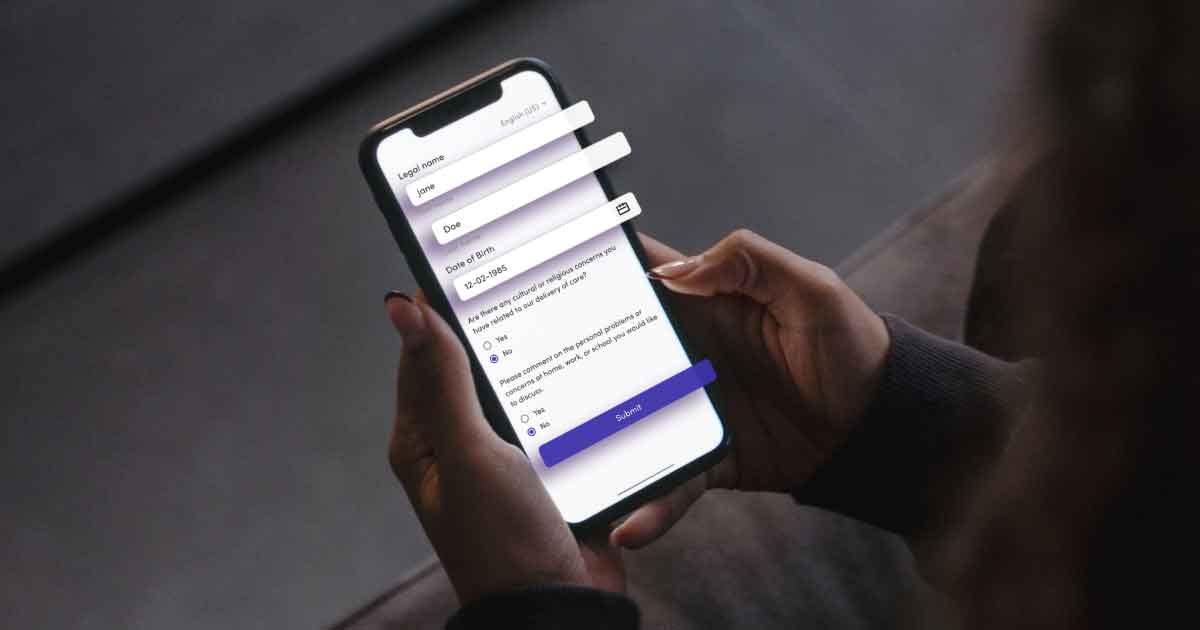
The paper medical intake form is a relic. It's a time-suck for your staff, a nightmare for your patients, and a liability for your practice. We all know the drill: the patient scribbles their life story on a clipboard, your front desk team spends 15 minutes trying to decipher the hieroglyphics, and then another 20 minutes manually typing it into the system. Half the info is missing, and you must play phone tag to get the rest.
This isn't just annoying; it's a terrible way to start a relationship with a patient. It screams, "We're stuck in 1995." Meanwhile, your patients book vacations, deposit checks, and order groceries on their phones. They expect better.
The good news? The fix is stupidly simple. Ditch the paper. A digital medical intake form is the easiest upgrade your practice will ever make, and the payoff is massive.
This Isn't Paperwork. It's Your Patient's Story.
Don't think of that doctor intake form as a bureaucratic hurdle. It's the first chapter of your patient's health story. It's where you learn about the allergies that could prevent a reaction, the medications that could cause a bad interaction, and the family history that points to a genetic risk.
The paper form is like trying to tell that story through a game of telephone. The message gets garbled, and details are lost. A digital form is like giving your patient a clear, direct microphone. They can tell their story completely and accurately, without the static.
The old way is broken because:
- Handwriting is a nightmare. Let's stop pretending we can read everyone's cursive. Is that "Lipitor" or "Lisinopril"? Guess wrong and the consequences are real.
- Everyone rushes. In a waiting room, patients just want to get it over with. They skip questions. They forget details. They guess.
- Your staff becomes data-entry clerks. Your highly-trained medical staff should be helping patients, not acting as glorified typists. It's a waste of talent and money.
The Digital Fix: Less Work, Fewer Errors, Happier Patients.
Here's how it should work: A new patient books an appointment. Your system automatically texts or emails them a link. While watching TV that night, they click it and fill out the medical intake form on their phone. They have their medicine bottles right there. They can take their time. The form is smart; if they say "yes" to diabetes, it asks follow-up questions. If they say "no," it moves on.
When they hit "submit," the magic happens. Their information flows directly into their file in your electronic health record. No typing. No deciphering. No lost papers.
For your patients, it's a breath of fresh air. It's convenient. It shows you respect their time. For you? It's a game-changer. Your front desk stops drowning in paperwork.
Nurses aren't chasing down missing information. Doctors walk into the room already prepared, reviewing a complete and legible history. The entire appointment is more focused, professional, and productive.
What to Steal From the Best Practices.
If you're going to do this, do it right. Don't just use some random online form. You need a tool built for medicine.
- Security is non-negotiable. This is health information. The platform had better be Fort Knox-level secure and fully HIPAA compliant. There are no excuses.
- It has to talk to your EHR. If the data doesn't flow seamlessly into your existing system, you've created a new problem, not solved an old one.
- Make it your own. Your forms should ask the questions you need answered. A cardiologist's form will look different from a pediatrician's. Customization is key.
- Keep it stupid simple. If your 80-year-old patient can't figure it out, it's a bad form. The experience needs to be intuitive and easy.
The Bottom Line You Can't Ignore.
This isn't about being trendy. It's about running a better, more innovative, safer practice. It's about replacing a frustrating, error-prone chore with a smooth, efficient process.
A digital doctor intake form is one of the few changes that makes everyone's life easier, yours, your staff's, and, most importantly, your patients. Simple Interact makes it easy, showcasing that you're a modern practice that cares about your patients' experience, not just their co-pay.
It's time to retire the clipboard for good.




Comments